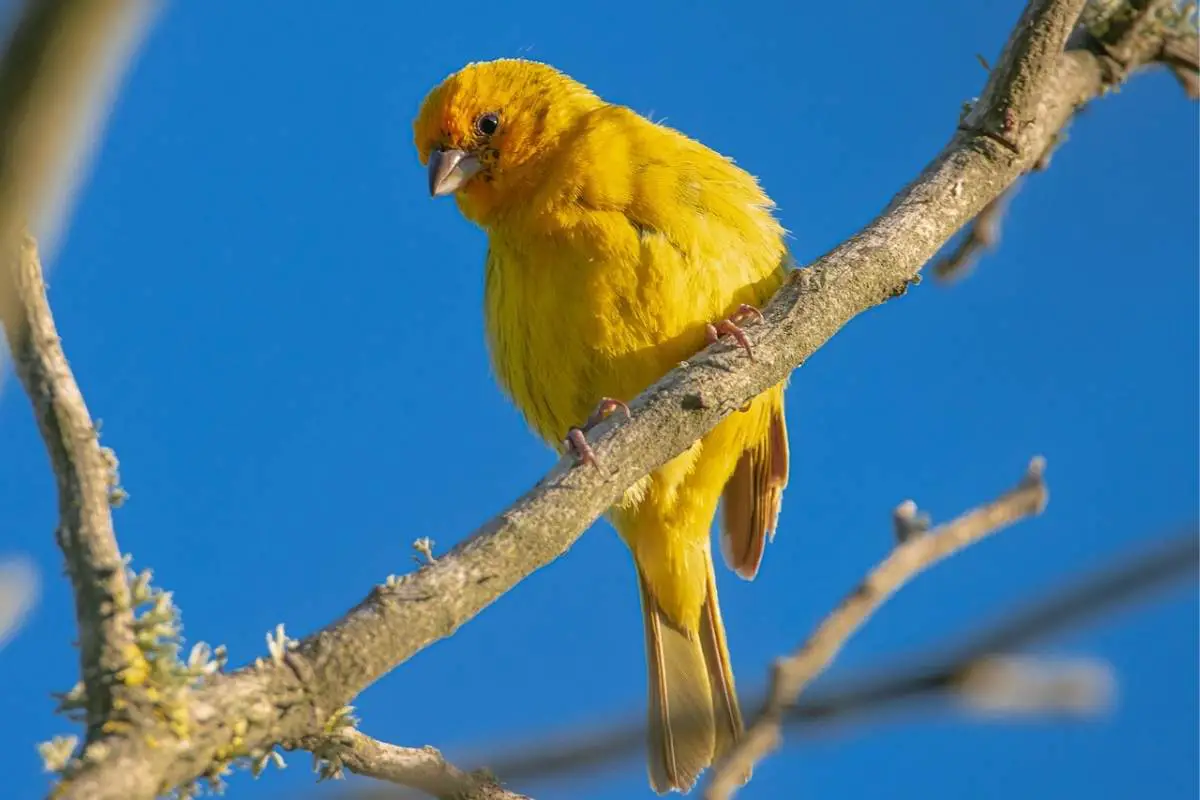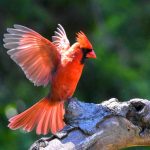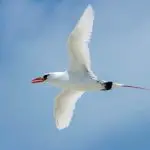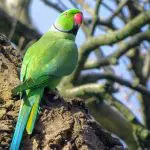Yellow birds are a vibrant and beloved sight in many parts of the world, and Hawaii is no exception. From the bright yellow head of the Saffron Finch to the endangered Palila’s yellow head, breast, and belly, the yellow birds in Hawaii are a unique and fascinating part of the islands’ avian fauna. In this blog post, we will take a closer look at some of the most interesting and notable yellow birds in Hawaii, including their species, habits, and where in Hawaii they can be found.
6 Yellow Birds in Hawaii
1. Saffron Finch

Scientific name: Sicalis flaveola
The Saffron Finch, a small songbird native to South America, has been introduced to the islands of Hawaii and can be found on all main islands. They are known for their striking brown plumage with a bright yellow head and breast and can be found in a variety of habitats, including urban areas, gardens, parks and open woodlands. Their diet includes seeds, fruits, insects and spiders.
In general, Saffron Finch is a hardy and adaptable bird species and it is considered as a popular pet bird due to its attractive plumage and melodious song. They are generally not considered a conservation concern in Hawaii.
2. Palila
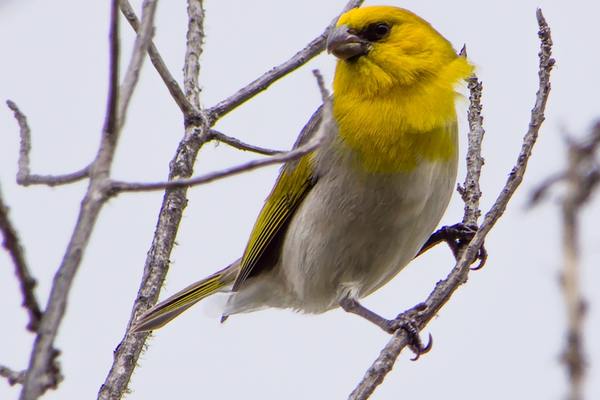
Scientific name: Loxioides bailleui
The Palila is a unique and critically endangered bird species that is native to the island of Hawaii. They are known for their striking yellow plumage and distinctive curved bill, which they use to forage for food in their native habitats.
Their diet primarily consists of seeds and fruits of the mamane tree, along with insects and spiders. They are found in the upper elevations of the Mauna Kea volcano, specifically within the Mauna Kea Forest Reserve, where they live in dry, shrubby habitats. They are around 6-7 inches in length and weigh around 1.5 oz .
Palila are quite active birds and they are known for their flitting behavior, where they fly from one branch to another while foraging. Due to habitat loss and competition with introduced species, their population has been declining and they are considered critically endangered.
3. Yellow-faced Grassquit
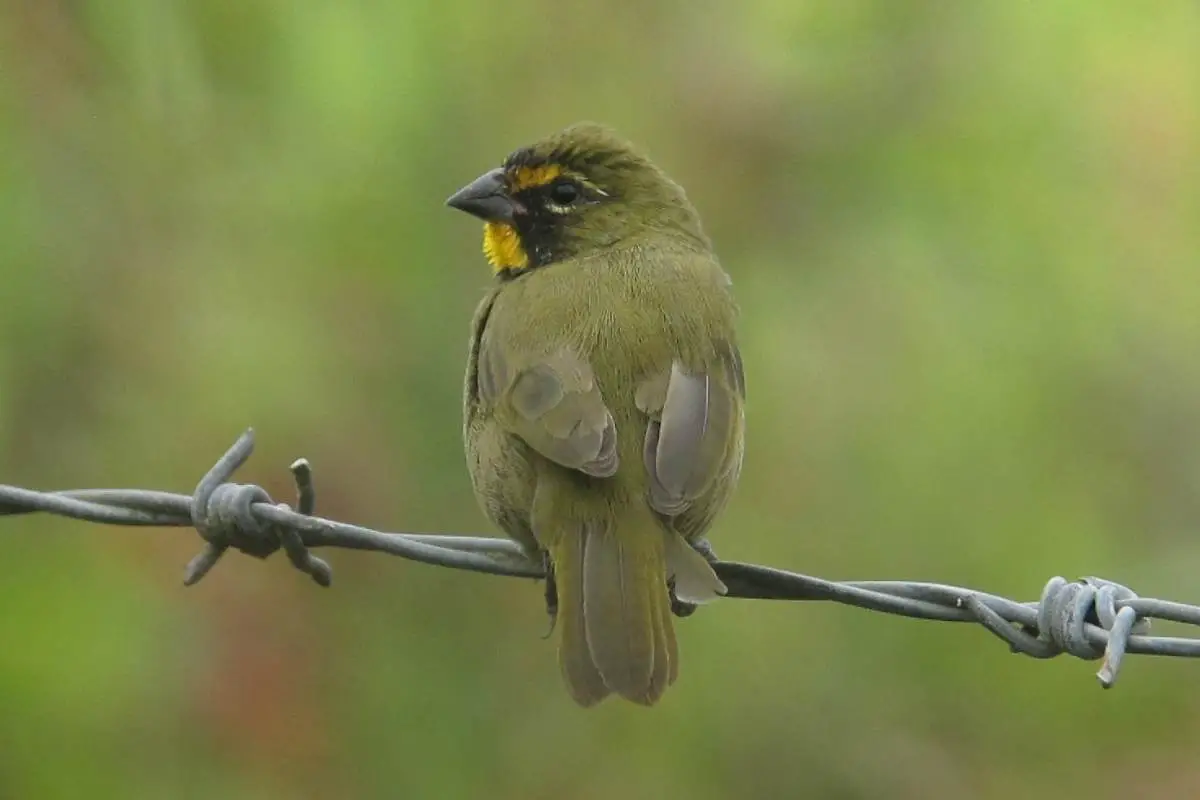
Scientific name: Tiaris olivaceus
The Yellow-faced Grassquit, a small bird native to Hawaii, captivates with its bright coloration. The bird boasts a yellow face and breast, complemented by olive green upperparts and a short conical bill. Measuring 4 inches in length and weighing 0.3 ounces, they are known for their diverse diet which includes seeds, small insects, nectar and fruit.
These birds can be found in various habitats such as dry shrublands, grasslands, coastal areas, and gardens. Active during the day, they can often be heard singing their distinct, melodic songs, which they use to attract mates and defend their territory. The Yellow-faced Grassquit can be found throughout the main Hawaiian Islands including Oahu, Maui, Kauai, Hawaii Island, and the offshore islands of Kure and Midway.
4. Yellow-fronted Canary

Scientific name: Serinus mozambicus
The Yellow-fronted Canary is a small, colorful songbird that is an introduced species to Hawaii. These birds have bright yellow head, breast, and rump, with olive-green upperparts and a short, conical bill. They typically measure around 5 inches in length and weigh around 0.5 ounces.
In terms of diet, Yellow-fronted Canaries primarily feed on seeds and fruits. They are also known to eat insects and nectar. Yellow-fronted Canary can be found in a variety of habitats including gardens, agricultural fields, and open woodlands. They are also commonly found in residential areas.
Yellow-fronted Canaries were introduced to Hawaii in the late 1960s and can be found throughout the main Hawaiian Islands.
5. Yellow Warbler
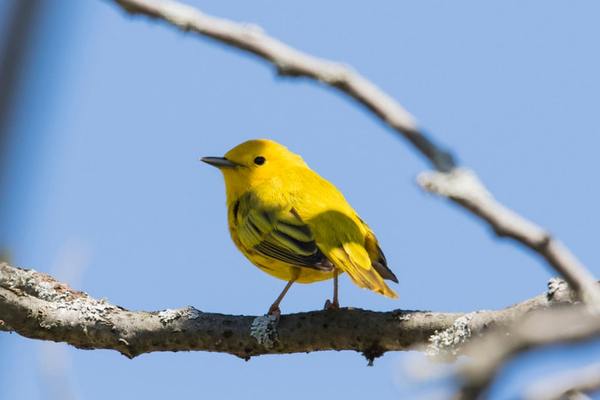
Scientific name: Setophaga petechia
The Yellow Warbler is a small, brightly colored bird that is a migratory species in the U.S. state of Hawaii. These birds have a yellow head, breast and belly, with olive-green upperparts and a short, conical bill.
Their diet mainly consist of insects, spiders, and small berries which can be found in a diverse range of habitats from gardens, agricultural fields, open woodlands and residential areas. These birds are known for their clear, melodic songs and their active behavior, often seen flitting about in bushes and trees.
During the fall and winter months, usually from late April to early November, they can be spotted on the main Hawaiian Islands, including Oahu, Maui, Kauai, and Hawaii Island. However, their population in Hawaii is not well known and not considered to be a resident species.
6. Yellow-rumped Warbler
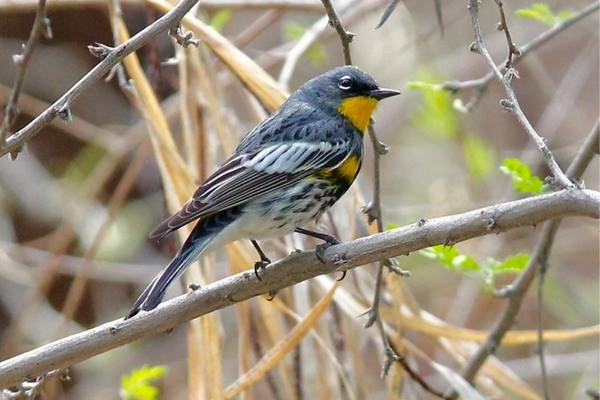
Scientific name: Setophaga coronata
The Yellow-rumped Warbler is a small, brightly colored bird that is a migratory species in the Hawaiian islands. These birds have a yellow rump, a white belly, with gray upperparts and a short, conical bill. They typically measure around 5 inches in length and weigh around 0.5 ounces.
Their diet mainly consists of insects and spiders. Yellow-rumped Warblers can be found in a variety of habitats, including gardens, agricultural fields, and open woodlands. They breed in North America, mostly in deciduous and coniferous forests, but they migrate to the Hawaiian islands and Mexico during the winter months.
Known for their clear, melodic songs and active behavior, these birds are often seen flitting about in bushes and trees. They also have the unique ability to eat the berries of the Myrica faya tree, which many other species cannot digest. As a “generalist species,” the Yellow-rumped Warbler can adapt to different habitats and is not considered threatened or endangered.
